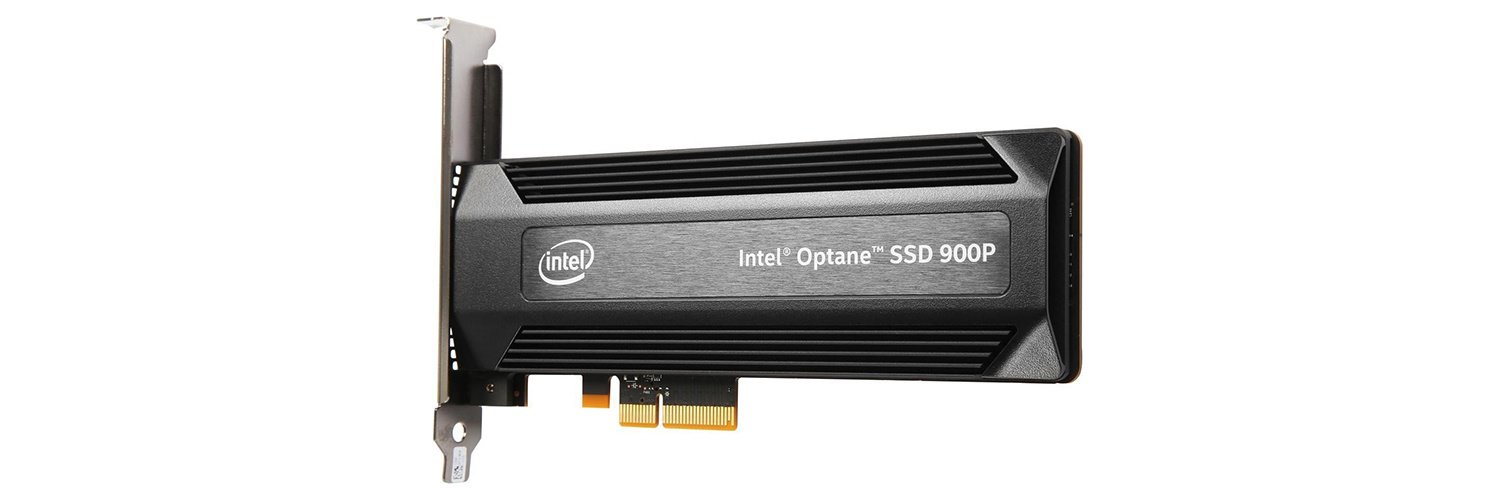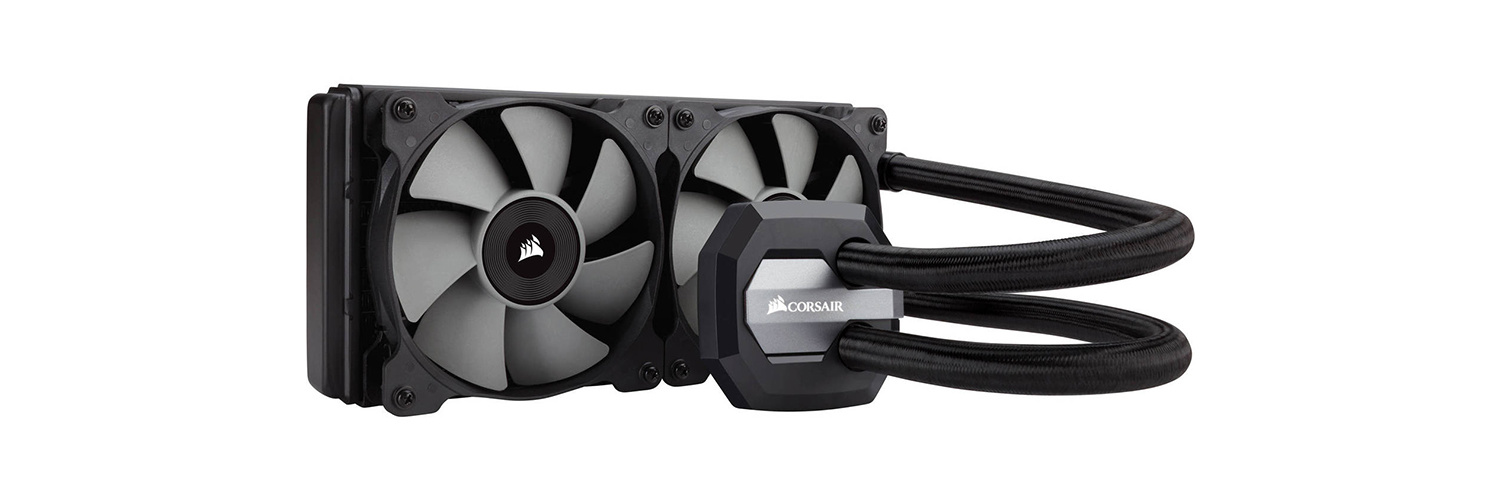In the previous article, we analyzed processor and motherboard options along with power supply and computer cases. Next, let’s talk about graphic cards, memory, and heat management issues. On the storage front, the introduction of affordable NMVe drives allows one to go past the bandwidth limitation of the SATA interface found on traditional SSD. Here is a short guide to help you navigate through the current offerings and avoid the marketing traps in order to build the perfect machine based on your budget.
Graphic Card
The graphic card or GPU is the second most important part of the PC after the CPU. Many software tasks and effects are optimized to use the GPU instead of (or along with) the processor. The user must balance their budget between the CPU and the GPU, which are the two legs of a work station. Make one leg shorter and you’ll end up with a crooked computer. Like the processors market, the GPU landscape has been very dynamic over the past few months with the introduction of the high-end Vega graphic cards from AMD Radeon and the counter offering from Nvidia Geforce. Personally, I’m not convinced by the Vega cards. They are not bad, but the GeForce are simply better. AMD tried to make a comeback in the performance category with its Vega 64 aimed at the Geforce 1080 family, but the results are disappointing. Despite being much more recent, the Vega 64 only reaches the level of the GeForce 1080 at best. And it does it under steroids with an important power consumption, thus generating heat and noise. At the moment, the ultra-high-end 1080 Ti still dominates the market.
The middle range Vega 56 fares better against the GeForce 1070, but Nvidia just launched the new “Ti” declination with the GeForce 1070 Ti to confront the new Vega 56. Unfortunately for AMD, the 1070 Ti is a very good option. In the end, the main deciding factor will be the price point but the latest crypto-currency frenzy is strongly impacting the prices.
Indeed, this latest financial absurdity generated a speculative trend on the mid-range graphic card market. Many models are out of stock and the prices are rising because of this unusual demand. People need GPU to “mine” Bitcoin or Ethereum. Hopefully the situation will stabilize as soon this monkey money crashes. After that, we will find plenty of used cards on Craigslist. Until then, the prices will remain unstable.

GeForce 1080 Ti graphic card. One of the most powerful model available on the market ($750). Note the massive cooling system with the three fans on the large radiator.
SLI and Crossfire: A Useless Feature
This technology consists of installing and linking together two or more graphic cards inside the computer in order to cumulate the processing power of multiple GPUs. Unfortunately, the vast majority of applications are not optimized for mutli-GPU architecture. Unless you are using an exotic program that benefits from this type of stacking, don’t waste your money on this.
Quantity of VRAM
Each graphic card comes with a certain amount of Video memory or VRAM. Normally the manufacturers do the math and install the right amount of VRAM based on the GPU power. Not enough VRAM would make a bottleneck for the CPU but sticking too much would create the reversed situation and drive the cost up for nothing. But sometimes, entry-level graphic cards come in two flavors. For instance, the GeForce 1060 is available in 3GB and 6GB version. There is no clear answer, it depends of the usage but high resolution workflow and monitors will take advantage of the additional VRAM. However, stick to the lower memory version if you are tight on budget, especially on the low-end side (e.g GTX 1050). Spend the extra money on the next level of CPU.
Founders Edition: Pay More for Nothing
You may notice the “Founders Edition” suffix on some Nvidia graphic cards. This pure marketing invention indicates that the card was designed and made by the GPU manufacturer as opposed to a third party brand such as MSI or Asus. Back in the day they were called reference cards. Stay away from these fancy names as they don’t bring any gains except on the price tag. Ironically, third party brand cards can sometimes be more powerful that the “Founders Edition” equivalent since the manufacturers implement a small dose of overclocking on their designs.
Nvidia Ti
Ti cards are the “plus” models fitting between two categories. For instance the GeForce 1070 Ti is the most powerful variant of the regular 1070. She sits between the 1070 and the upper 1080. The “Ti” cards are usually a way to create new sale options for customers (or respond to the competition).
GPU Options:
Coach Cabin
- AMD Radeon: RX 560 2GB ($120)
- Nvidia GeForce: GTX 1050 2GB ($120)
- CPU Pairing: Ryzen 5 1400 ($150)
Economy Plus
- AMD Radeon: RX 570 4GB ($230), RX 580 4GB or 8GB ($250-300)
- Nvidia GeForce: GTX 1060 3GB or 6GB ($220-280)
- CPU Pairing: Ryzen 5 1600 ($200) or Ryzen 7 1700 ($280),
Business Lounge
- AMD Radeon: RX Vega 56 8GB ($450-$550)
- Nvidia GeForce: GTX 1070 Ti 8GB ($450-$500)
- CPU Pairing: Ryzen 7 1800X ($440) or Intel i7 8700K ($410)
First Class Experience
- AMD Radeon: RX Vega 64 8GB ($600-$650)
- Nvidia GeForce: GTX 1080 8GB ($530-$580), GTX 1080 Ti 11GB ($750), GTX Titan Xp 12GB ($1200-1500)
- CPU Pairing: Ryzen Threadripper or Intel Core i9 family
Random Access Memory (RAM)
The RAM is an ultra-fast flash memory used to cache (pre-store) temporary data for the processor. Without RAM, the CPU would have to tap directly on the classic storage device (SSD or Hard Drive), which would create a bottleneck because of the limited speed of the drive and communication architecture. In other words, the RAM is the middleman smoothing the data transfer between the slow SSD and the fast processor.

The DD4 memory doesn't heat much. The price of the memory doubled since 2016. Save your money and purchase the most basic version.
DDR Quantity Versus Price
First, make sure to get the right generation of RAM. Modern processors utilize DDR4 memory. The amount of DDR4 memory depends on usage and budget. Working with several programs at the same time and with high-resolution files will consume more memory. Today, 8 GB of memory is the bare minimum for a computer, but try to install at least 12 or 16 GB if your budget permits.
32 GB is a comfortable amount for a mid-range computer, but ultimately, 48 or 64 GB would be better for high-end setup, especially for video editing and After Effects.
Unfortunately, memory prices doubled since last year, most likely because of illegal price fixing among the manufacturers. Due to this increase, I would prioritize the CPU upgrade over the memory one once reaching 16 GB of DDR on an economy computer and 32 GB on a powerful PC. Right now, 8 GB of DRR4 costs around $90. This money can be better spent to purchase the next category of CPU. You can also start with a certain quantity of RAM now and add more sticks later on. Just make sure to install the exact same brand, model, and speed to prevent compatibility issues. In theory, you could mix models and speed but avoid it if possible.
DDR Speed: 2,400, 2,666, or 3,200?
In terms of speed, the situation is simple: just follow the recommended speed listed by the CPU manufacturers in the specification chart. At the moment, most processors use 2,400 or 2,666 MHz memory. No need to go higher than that unless the price is similar. The performance gain will be negligible and this money should be prioritized on the CPU and GPU.
Last thing, please forget about the useless and pricey heat sink on DDR memory modules and avoid all the “extreme editions” and other marketing idiocy. Unless you perform advanced overclocking, DDR4 memory doesn’t get very hot and the small air stream inside the computer case is more than enough to handle the memory heat. Just buy any regular memory like the basic Crucial or Corsair. Finally, make sure that your motherboard has enough memory slots; most boards have a least 4 slots for the RAM.
Storage Options: Hard Drive, SSD, and NVMe
Spinning Hard Drive
The classic 3.5” hard drives are bulky, fragile, and slow but they still find their way into our PCs because they offer the best value in terms of price per bit of data. Only use them to store “cold” files and archives. A common practice is to install two large hard drives in RAID 1 (mirror) in order to create a temporary backup system before moving your files to the cloud or an external storage solution. Drives spinning at 7,200 RPM are faster but pricier than the slow 5,400 RPM versions.
SSD and NVMe Interface

SATA SSD versus M.2 NVMe SSD. Most NVMe drives like this one are based on the M.2 2280 form factor (22mm x 80mm) and come with a M Key socket (PCIe 4x).
A modern computer must have at least one SSD to run the main operating system (e.g Windows 10, Linux). The speed and latency gain of the SSDs over traditional spinning hard drives is enormous. If possible, buy another SSD to dump the “hot” files that are being used on live editing projects. However, the current SATA interface is now reaching its limit and the next generation of SSD based on the NVMe interface and PCIe bus is going to replace SATA in the future. Here is an explanation about this new standard:
- Performance and price: Thanks to the new interface and PCIe bus, the NVMe drives are up to six times faster than the typical SATA SSD. The latency and queuing operations are also vastly improved. However, these new SSDs are about 50 to 100 percent more expensive than the classic 2.5” SATA SSD.
- NVMe interface: When the SSD became affordable for the consumer market around 2010, they inherited from the old SATA/AHCI interface initially designed for the traditional spinning hard drive architecture. This interface allowed an easy transition thanks to its compatibility with the SSD but it also created a data bottleneck because of its limited bandwidth (550MB/s). The manufacturers created a new standard called NVMe in 2009 that progressively replaced the ACHI interface on the PCIe SSD. In real life, the NVMe technology offers great speed gain by reducing the latency and increasing the bandwidth.
- PCIe bus: In order to handle the greater speed offered by the NVMe interface, the SSD must use the PCIe bus. NVMe drive are actually PCIe SSD. Therefore, they can be mounted directly on the PCIe slot like a graphic card but in general, the NVME SSD are attached via the M.2 connector because of the limited amount of PCIe slots (and the graphic card already uses the fastest line directly connected to the CPU).
- M.2 form factor and connector: The classic SATA SSD uses the 2.5” form factor because it is a standard size for laptops. However, the 2.5” format is oversized for the SSD and they should be much smaller. The new NVMe SSD are getting rid of the 2.5” constraint to adopt the M.2 form factor also borrowed from the laptop industry. The M.2 NVMe SSD are not bigger than a gum stick. The number next to the NVMe SSD indicates the width and length of the drive in millimeter. For instance, 2280 SSD means 22mm (width) by 80mm (length). Many motherboards accept several sizes but the standard for desktop computers is becoming the 2280. Be careful: all M.2 shaped drives are not necessarily NVMe ready and the early M.2 versions were just using the old SATA interface. Finally, several types of socket are present on the M.2 drives (B key, M key and B+M key). However, the majority of the NVMe drives use the fastest M Key socket running at full speed over four PCIe lanes (versus two lanes for the B Key and B+M key).
- Final word: Are you confused already? Don’t worry, the vast majority of NVMe drives are now following the same specifications: M.2 connector, 2280 size and fast M Key socket (PCIe 4x). That’s all you need to check when buying a NMVe SSD.
Do You Really Need an NMVe SSD?
As we just saw, the classic 2.5” SATA SSD are limited by the SATA interface to 550 MB/s. On the other end, the best NVMe SSD are reaching up to 3,500 MB/s (read) and 2,100 MB/s (write) speed, and they offer much better latency. They also cost twice as much compared to the SATA SSD. As always, the final answer depends on your budget and usage. In any case, NVMe SSD will seriously speed up your applications’ boot time and task-responsiveness, especially when working with large files. High-bandwidth materials like pano-stitching and raw video will benefit from the additional bandwidth for preview and scrubbing. However, export performance won’t be as dramatic because the drive is rarely the limiting factor in this phase. Rendering is usually not limited by the drive but by the processing power of the CPU and GPU. Feeding more data to these processors won’t help when they already run at full capacity.
Eventually, a reasonable price/performance solution is to install an NVMe SSD for the operating system and add a cheaper SATA SSD to store the hot files like the images and video used on current editing projects. To give you an idea, most 12 bits intermediate Codec and even some lossy raw footage up to 4K resolution don’t saturate the SATA SSD bandwidth (Canon Cinema Raw Light is 1 Gbps, ProRes 4444XQ is 2.1 Gbps, Redcode 6:1 is 500 Mbps).
What about the Intel Optane?

New Intel Optane drive based on the 3D Xpoint flash memory for ultimate performance. Also based on the the NVMe interface.
Optane is a new type of flash memory called “3D Xpoint” developed by Intel. This technology just hit the market and the performance is superlative but the Optane drives are extremely expensive and only available in limited size (480 GB maximum at this time, $600). The Optane drives also use the NVMe interface and PCIe bus. In addition, Intel proposes small Optane M.2 modules (16-32GB at $45-$75) to be used as cache SSD for boosting the performances of traditional hard drives. The results are actually surprisingly good (except for large files of course).
Storage Options:
Economy Cabin
- At least one 500 GB SATA SSD ($150) for the operating system and hot files storage.
- Optional: One 2 TB to 4 TB ($60 to $120) hard drive for cold storage.
Business Lounge
- One 500 GB ($250) or 1TB ($580) NVMe SSD for the operating system and hot files storage.
- One 500 GB ($150) or 1TB ($300) SATA SSD for hot files storage or another NVMe SSD for this task if you need very high bandwidth (e.g. working with 4K-8K raw video files)
- Two large 4 to 6 TB hard drives mounted in RAID 1 (mirror) for cold storage and temporary backup
First Class Experience
- One 480 GB Intel Optane Drive ($600) for the operating system plus one 2 TB ($1,200) NVMe SSD for hot files storage.
- Another set of large Intel Optane and NVMe drives for hot files storage.
- Many high capacity hard drive mounted in RAID 5 or 6 for cold storage and temporary backup. Installed in the computer and/or NAS.
Heat Management
Adequately cooling the computer is very important. First, if the temperature reaches a critical level, auto-monitoring and failsafe options will kick in by reducing the power output, thus dramatically dropping the performance of the system. Unless you activate the notification options, you may never realize that the PC is entering the slow “life-saving” mode. The second reason is noise level. Excessive heat means faster spinning fans and noise. A cheap fan spins faster to compensate for its small diameter. Opt for large but discrete fans like 120 or 140 mm options. Finally, good cooling will help to reduce the thermal stress on your system and enhance the lifetime of the components.

All-in-one water cooling solutions are getting cheap. However they are only justified for very high TDP processors and overclocking.
- Case ventilation: Many people only focus on their CPU and GPU. They are the hottest parts of the PC, but you also need to bring cool air from the outside instead of simply circulating hot air from the inside of the case. Most good quality cases come with one fan located at the back near the CPU to push the hot air outside. Give this fan a little brother and install it in front of the case. Fit one 120 mm or 140 mm fan to pull fresh air inside. Cheap and simple, you’ll probably gain a few degrees for $8.
- CPU Cooling: The CPU cooler depends of the TDP of the processors which can be found on the manufacturer’s page. Entry-level CPUs with TDP lower than 70 W can work on stock fans or a $20 cooler. Invest a little bit more ($30-$50) for higher TDP processors reaching around to 100-130 W. One of the best product is the Cooler Master Hyper 212 EVO ($30). Beyond 140 W, I would recommend installing a massive cooler like the Noctua NH-U14S or NH-D15 ($60 and $90). But make sure that the unit physically fits in your case and doesn't get in the way of the RAM memory. Then, double check the compatibility of the cooler with your CPU socket, especially for the most recent ones (TR4, LGA2066).
- GPU Cooling: Most graphic card manufacturers do a good job to refresh the GPU, but some models can be noisy or cheaply made with squeaky fans on the board. Research the card reference for two minutes on Google before checking out.
- Water-cooling: Many good all-in-one solutions are now available for $100-150 on Internet. Water-cooling can be justified for overclocking and beast computers with high-TDP processors, but keep in mind that these systems tend to be noisy. The radiator has to be mounted on the edge of the case with several fans directly exposed to the outside world.







Great articles! You should do a write up on monitors, the largest bottleneck of all is a poor monitor!
Thanks. I should do the monitor also. Fstoppers is going to post a series of articles very soon about monitors.
Thanks for the detailed write up, I was just having a discussion with someone who didn't believe GPU was important for PS, I was explaining that it most certainly does matter.
Thanks Bill. On PS, the GPU does help for certain effects with large files.
I can't that I see the GPU doing anything in photoshop. My processor is an i7 6700k- the PC is a couple years old. For a month or too I was running that without a GPU. It performed really well. Then I put in a GTX 970. No improvement whatsoever. I work on large composite images so things can bog down occassionally and I use a lot of liquify and other effects that I imagined ran off the GPU. Nothing was even fractionally faster. Processor and RAM are the keys for me with photoshop.
It is incorrect to say PS doesn't use GPU, and as Bob mentioned, the two biggest things (and they are big as they are used literally throughout the retouch process on every single image the way I work, is Smooth Brush Resizing, and Scrubby Zoom, both of which can be turned off... but you have a much less efficient workflow. Bottom line, GPU matters.
Hey I'm just telling you what I saw. I like Bob's explanation that while the prorgram may be GPU accelerated the onboard GPU is up to the task and further help from a real GPU is no help at all. That covers my experience and Adobes claims of what a GPU is used for.
One bit of info that could be useful for people who wants to get the max out of high-end monitors like the Eizo ColorEdge CG series, is that you need a graphics card that can output 10bit color. As far as I know (if I'm not wrong), the NVidia Quadro series of cards are one of a few cards actually capable of doing this.
Cheers,
Eivind
Hi Eivind. You are right. I think that the AMD FirePro also outputs 10 bits.
The problem with 10-bit is; How do you show the rest of the world your work? You'd have to whittle the data back to 8-bit, kinda defeating the purpose of it. Also, I'm not aware of any 10-bit printing systems, if print was a destination. You're again back in the 8-bit world.
So it's cool to have better visual access to some of your data, but what's it really going to do for you?
Canon have 16-bit printer Plug-In/Add-on for PS, and there are multible Print Software and RIP Software out there using 16-bit printing.
And regarding the benefit of 10-bit workflow, its not while you make output of images the biggest benefit are, but in your workflow, smoother colors more correct colors and grey tones gives you better control...
Saving to 16-bit TIFF for printlabs or for i.e. sale/clients...
Some of us have "moved forward" from 8-bit jpg and only using our images on instagram/facebook...
All AMD cards support 10 and 12 bpc natively. (including the consumer gaming cards)
For DirectX, but not for OpenCL. To get 10-bit OpenCL for Photoshop requires an nVidia Quadro or AMD Fire series.
Thanks Aaron for your solid contribution, as always. It's a pleasure to have you here.
Dude, I have a 10 bit display connected right now to my Vega 64. I have the the 30-bit option in Photoshop and it works just fine. Only geforce cards don't support it because Nvidia...
Yes, I can select that option too on my 1080Ti. But it's only dithering the image to 10-bit at the output, it's still rendering it at 8-bit internally for OpenGL.
Problem is Adobe only support OpenGL/CL 10-bit output on "Pro" cards...
And on Windows the 10-bit output on gaming graphic cards are mostly directX, not OpenGL...
To get 10-bit OpenGL output you need all parts of your workflow to support it both GPU, Driver, OS, and Software...
Fantastic series. As my teacher said, "You're only as fast as your slowest part" So people don't take short-cuts. Buy parts that complement each other.
Thanks, your teacher is right, that's common sense ;)
You seem to be looking at gaming benchmarks for some reason. The vega cards are faster in compute loads than the 1080ti, or even the titan xp. They also have better opencl support (which is what Photoshop and Lightroom uses).
My problem with the Vega is that AMD is again having issues with power efficiency as with its old CPU and GPU. They did a great job for the new Ryzen but they failed with the GPU. The GTX 1000 serie is a year older than the Vega, yet the Vega cards burn up to 150 more W, create a lot of heat and noise. The price are high (let's see in the few month). For the performance, Open CL stuff is nice and I wish Adobe could work more closely with AMD instead of the cuda thing.
I got mixed feedback from users with Vega but if you have solid data showing how the Vega 64 outperform the 1080 Ti, I'll be happy to take a look.
Uhm, Photoshop and Lightroom don't even support cuda. Opencl only. The power efficiency? I mean really? In a high performance workstation? Who cares... Besides, in compute loads they are just as power efficient, if not more (I have a liquid cooled vega64 and some nvidia cards as well). The benchmarks are your responsibility (you'd think that's the minimum before writing an article like this...). I don't have access to high end nvidia cards at the moment. There are plenty of compute benchmarks on the internet though, the Blender render ones are especially interesting as it's a real world test.
Yeah, I know for Cuda. Blender and Cinebench are good bench but real life situation is better. I've done the research with early users in real workload situation. Based on the price/performance/heat/noise ratio I prefer Nvidia. Personally I care about the noise and heat. 150W is not a small difference.
But I also put the Vega 64 as a buying option for those who want to get it or don't care about the power efficiency, I can understand that. As with the CPU, I proposed both options and Radeon users won't be left behind. Let's be clear, Vega cards are not bad. As I said in the article it will depend of the price evolution.
I'm totally open to discussion but if you show up stating things ("The vega cards are faster in compute loads than the 1080ti") you can't shy from providing the data. You'd think that's the minimum before writing an comment like this.
You're writing the article, you should get the data (instead of making stuff up). The raw compute performance (measured in flops) is provided by the manufacturer. 150w simply isn't true. It's 100w at most in games and much less (or even better depending on the software) in compute. I know this from experience. Blender is not a benchmark, it's a professional software package used in production. As for noise, these days it's trivial to get a silent, fully water cooled system if you're spending that kind of money.
I'm sorry but your recommendation to buy a 1080 Ti for video editing is a pretty bad advice.
There's barely any difference in performance in most ( if not all ) video editing applications and filters between the 1080 Ti and an overclocked 1060.
Pudget systems have several benchmarks on the matter with a hell of a lot GPUs and CPUs.
I don't think we read the same article:
"The GTX 1080 Ti 11GB did great when rendering previews. On average, it was about 15% faster than the GTX 1070, 9% faster than the GTX 1080 8GB"
"Our results when exporting are very interesting because at times (such as when exporting to 1080p) the GTX 1080 Ti is awesome -coming in at almost 20% faster than the GTX 1080."
" If we look at the results as an overall average, the GTX 1080 Ti performed about 14% faster than the GTX 1070, 9% faster than the GTX 1080, and 1% faster than the Titan X."
https://www.pugetsystems.com/labs/articles/Premiere-Pro-CC-2017-GeForce-...
PudgetSystem don't even list the 1060 OC in their Premiere recommendation:
https://www.pugetsystems.com/recommended/Recommended-Systems-for-Adobe-P...
And by the way, I propose options based on budget. Like the CPU, past a certain point you'll have to spend a lot of money to get moderate performance gain.
Max difference between the $400 1070 and the $750++ 1080 Ti is 15s at under 200s of runtime.
In most functions, usually unexplored by reviewers since they aren't video editors, there's barely any difference, try doing some real-life tests in After Effects for example.
One point of video memory for Premiere Pro: I found that 2gb of video memory will lock up HARD when scrubbing the timeline.
Premiere Pro appears to be attempting to cache before and after the play head while scrubbing. If it hits the video memory wall (most likely if there are several video or audio clips), it takes rebooting the computer to recover. Four gigs of video ram appears to solve that problem.
In addition, multiple video cards do nothing for Premiere Pro. Adobe claims there would be a bit faster export, but in practice...nope. It might, in fact, slow a bit.
Beyond going to 4gb of video ram, the only other boost Premiere Pro can take advantage of is a step up in video memory bandwidth.
Liquid cooling done right is near silent. Mine makes no discernible noise until all the fans are cranked up to nearly 100%. Push/pull radiators with a couple NZXT Kraken X62s.
Oliver, there's one more point you should add about "Founder's Edition" or reference design video cards: they blow air out the back of the PC's case vs. modified coolers that recirculate air inside the case. Choose whichever type better fits with your case design and air flow, neither is "better", just different air flow considerations. Also, if you want to mod one for water cooling, the reference cards are easier.